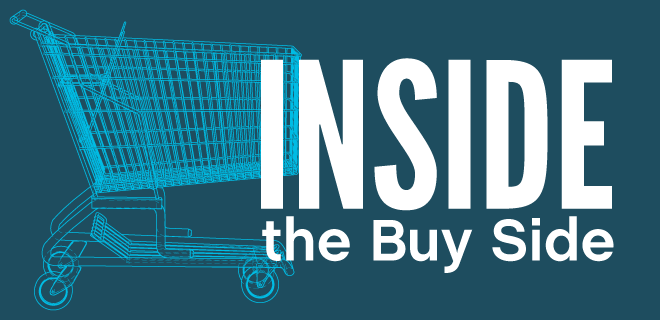
Data clean rooms offer a solution for smaller advertisers to achieve personalized marketing at scale through secure, collaborative, first-party data sharing.
Worldwide, finding a consensus on nearly anything is just about impossible. Yet, when thinking about the way people interact with brands online, there are two glaring truths: consumers demand personalization and privacy in nearly equal measure.
Studies show time and again that nearly 90% of consumers want to do more to protect their online privacy, and almost as many consumers will choose one brand over another if that brand provides a personalized experience. Both of these aspects of digital advertising and commerce are now table stakes. Striking the balance between the two, however, can be difficult, particularly for upstart brands.
On the privacy front, many brands must contend with increased regulation. Especially in a more globalized marketplace, brands need to conform to international regulations, including GDPR, CCPA, and many more, which can limit the amount and type of consumer data they can collect.
This is all leading to the eventual depreciation of third-party cookies. While it’s true that Google has walked back from its plans to eliminate cookies in Chrome, other browsers have degraded their value, and their continued use in global commerce can run afoul of privacy regulations. Moreover, even if cookie depreciation is slow, brands can find a point of differentiation by offering services that demonstrate respect for consumer privacy. Traditionally, this means turning to transparently collected first-party data.
Yet for smaller advertisers, building up stores of that valuable data can be nearly impossible; third-party cookies are a cheap and abundant way to deliver that needed personalization at scale.
Looking to the future, data clean rooms can be a conduit for advertisers to continue offering highly personalized experiences while also respecting consumer privacy through multiparty collaboration and first-party data access.
What Are Data Clean Rooms?
To understand what a data clean room is, it’s first essential to know why it rose to prominence about a decade ago. For smaller brands and advertisers, there isn’t the luxury of vast amounts of first-party data for targeting and personalization efforts. However, if advertisers could share data with other smaller entities, perhaps everyone could benefit from those insights.
Data clean rooms provide a secure virtual environment where multiple parties can analyze and collaborate using shared, anonymized data sets without the risk of exposing or sharing the underlying data. These virtual platforms provide the necessary data protections that can enable collective user data programs while remaining above board with regulators.
The Importance of Multiparty Collaboration in Data Clean Rooms
As regulation increases and consumer sentiment moves more towards privacy, brands and advertisers will need to rely more heavily on their first-party customer data. Collection of this data must be ethical and based on a value exchange, with consumers willingly offering their information in exchange for exclusive offers, access to gated content, rewards programs, and much more.
For larger brands with massive customer bases, accessing this first-party data provides a major competitive advantage over smaller brands. If you already have a user base of hundreds of thousands of customers, turning that user data into something actionable is almost as simple as flipping a switch. Smaller brands don’t have that same luxury, which is where collaboration becomes essential.
Data clean rooms level the playing field for smaller advertisers by pooling first-party data to create a unified resource that all contributors can access.
What Advertisers Can Do With Pooled First-Party Data
By working together, small and mid-tier advertisers can enjoy the same insights as larger brands with massive stores of first-party data through data clean rooms.
The utility of this pooled data can’t be understated; bringing in anonymized consumer information from multiple brands can dramatically improve customer experience across each brand’s channels. By analyzing aggregated data, advertisers can identify patterns and trends that might not be evident from their data alone. Zooming out and broadening the pool of insights enables more precise audience targeting, which can improve the effectiveness of marketing campaigns.
Advertisers can also leverage this pooled data for performance tracking and benchmarking campaign efficacy against industry standards or competitors to help identify areas for improvement.
Data clean rooms help facilitate this collaboration, extending beyond data sharing. It can also enable advertisers to co-create targeted campaigns with partners, which can help optimize ad spend and maximize reach.
Why We Need Clean Room Standardization
Once you understand the utility of data clean rooms, it’s pretty easy to see the difference they can make industry-wide. Unfortunately, one of the biggest challenges of data clean rooms that threaten their adoption is a lack of rules and standards for contributors.
Standardization works to ensure consistency and trust across platforms. Establishing uniform protocols and frameworks for data security, privacy, and collaboration can facilitate seamless data sharing and analysis between different parties, reducing complexity, enhancing efficiency, and encouraging continued collaboration.
Additionally, locking in set security protocols guarantees that all parties adhere to the same stringent regulations, thus protecting consumer data more effectively.
In early 2023, the IAB Tech Lab set out to create a set of unified standards for data clean rooms. While this project is still ongoing, it opens up the conversation for parameters of collaboration in the future.
Data clean rooms are not without faults, but their adoption is critical to enable small and mid-sized advertisers to compete with larger companies as the availability of third-party data dwindles. Coming together, creating a standardized methodology for data clean rooms, and using that combined data effectively can be a major win for the entire industry.